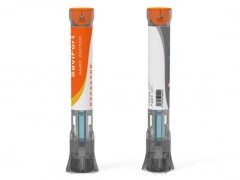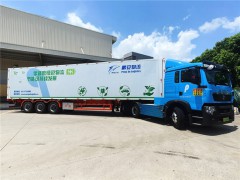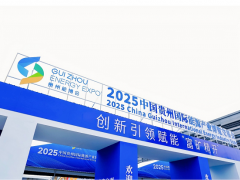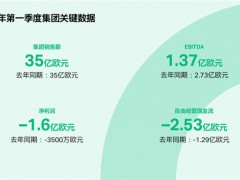據(jù)海灣新聞網(wǎng)2023年8月17日迪拜報(bào)道,在經(jīng)歷了幾十年的石油和天然氣繁榮之后,海灣國(guó)家時(shí)下正瞄準(zhǔn)“綠色”氫氣,試圖將經(jīng)濟(jì)轉(zhuǎn)型為非石油收入來(lái)源,并一舉緩解氣候危機(jī)。
石油生產(chǎn)國(guó)沙特阿拉伯、阿拉伯聯(lián)合酋長(zhǎng)國(guó)和阿曼正在大力投資這種對(duì)氣候友好的燃料,以尋找替代原油和天然氣的收入來(lái)源。
綠色氫氣,即可再生能源電解水產(chǎn)生的氫氣,似乎解決了許多問(wèn)題:它污染低,具有廣泛的潛在用途,這可能使它既有利可圖,同時(shí)又能保護(hù)地球。
但是這種燃料目前只占全球氫氣總產(chǎn)量的不到1%,還不具備商業(yè)可行性,需要大規(guī)模擴(kuò)大可再生能源的使用——這一過(guò)程可能需要數(shù)年時(shí)間。
盡管如此,由于石油收入的下降,海灣國(guó)家仍有機(jī)會(huì)在能源市場(chǎng)上扮演主要角色。
現(xiàn)今大多數(shù)氫氣是由污染嚴(yán)重的化石燃料產(chǎn)生的,但綠色氫氣是利用風(fēng)能、太陽(yáng)能和水電等可再生能源從水中提取的。
化石燃料燃燒時(shí)會(huì)產(chǎn)生有害的溫室氣體,而氫氣只會(huì)釋放水蒸氣。它被吹捧為運(yùn)輸、航運(yùn)和鋼鐵等高污染行業(yè)的潛在用途。
“出口領(lǐng)導(dǎo)者”
沙特阿拉伯利用其龐大的投資資本,正在紅海上建造世界上最大的綠色氫氣廠NEOM,這也是一座耗資5000億美元的新型未來(lái)巨型城市的命名。
官員們表示,到2026年底前,這座耗資84億美元的綠色氫氣廠將整合太陽(yáng)能和風(fēng)能,每天生產(chǎn)多達(dá)600噸的綠色氫氣。
今年將主辦聯(lián)合國(guó)COP28氣候大會(huì)的阿聯(lián)酋在7月份批準(zhǔn)了一項(xiàng)氫氣戰(zhàn)略,旨在到2031年前使其成為全球十大綠色氫氣生產(chǎn)國(guó)之一。
“氫氣將成為能源轉(zhuǎn)型的關(guān)鍵燃料。”阿聯(lián)酋阿布扎比國(guó)家石油公司(ADNOC)的高級(jí)官員哈南·巴拉拉表示,并稱這是ADNOC的“自然擴(kuò)張”。
巴拉拉告訴法新社:“我們相信氫氣及其載體燃料作為新型低碳燃料具有巨大潛力,阿聯(lián)酋完全可以利用這一潛力。”
但阿曼似乎已經(jīng)準(zhǔn)備好引領(lǐng)海灣地區(qū)的清潔氫氣競(jìng)賽。
國(guó)際能源署(IEA)在6月份的一份報(bào)告中稱,到本十年結(jié)束前,阿曼有望成為全球第六大原油出口國(guó)。
IEA表示,阿曼的目標(biāo)是到2030年前每年至少生產(chǎn)100萬(wàn)噸綠色氫氣,到2050年前每年生產(chǎn)850萬(wàn)噸綠色氫氣,“這將超過(guò)歐洲目前的氫氣總需求量”。
據(jù)德勤會(huì)計(jì)師事務(wù)所稱,中東國(guó)家,主要是海灣國(guó)家,將在短期內(nèi)引領(lǐng)全球清潔氫氣貿(mào)易,到2030年前出口他們約一半的國(guó)內(nèi)產(chǎn)量。
德勤會(huì)計(jì)師事務(wù)所在6月份的一份報(bào)告中表示,盡管海灣國(guó)家仍將是“出口領(lǐng)導(dǎo)者”,但北非和澳大利亞預(yù)計(jì)屆時(shí)將擁有最大的潛力。
希望或炒作?
專家預(yù)測(cè),海灣國(guó)家可能還需要數(shù)年時(shí)間才能生產(chǎn)出與化石燃料替代品相比成本具有競(jìng)爭(zhēng)力的綠色氫氣。
雖然由于技術(shù)進(jìn)步,可再生能源的成本已經(jīng)下降,但綠色氫氣的生產(chǎn)還不能盈利。
新加坡國(guó)立大學(xué)中東研究所研究員艾莎·薩里希表示:“海灣國(guó)家將盡可能長(zhǎng)時(shí)間地專注于最大化碳?xì)浠衔锏匿N售。”
這位專家說(shuō):“綠色氫氣要成為一種商業(yè)交易商品,還需要多年的試驗(yàn)和失敗。”他補(bǔ)充說(shuō),一旦技術(shù)成熟,成本下降,綠色氫氣“可能成為未來(lái)的新燃料”。
目前全球?qū)錃獾男枨笠廊徊幻骼省5硣?guó)家是日本和韓國(guó)等依賴能源進(jìn)口的亞洲國(guó)家的長(zhǎng)期能源供應(yīng)國(guó),這些亞洲國(guó)家計(jì)劃將海灣國(guó)家納入自己的脫碳計(jì)劃。
然而,阿聯(lián)酋前氣候變化部長(zhǎng)阿卜杜拉·努埃米警告稱,“海灣國(guó)家現(xiàn)有的氫氣運(yùn)輸基礎(chǔ)設(shè)施不足,將需要大量投資才能進(jìn)行改造”。
李峻 譯自 海灣新聞網(wǎng)
原文如下:
'Fuel of the future': Gulf countries, including the UAE, Saudi Arabia and Oman, bet on 'green' hydrogen
DUBAI: After riding an oil and gas boom for decades, Gulf states are eyeing "green" hydrogen as they try to transition their economies to non-oil based revenue sources and ease the climate crisis with one stroke.
Oil producers Saudi Arabia, the United Arab Emirates and Oman are investing heavily in the climate-friendly fuel in a search for alternative revenues to crude and gas.Ads by
Green hydrogen, which is the hydrogen created when renewable energy electrolyses water, appears to solve many problems: it is low-polluting and has widespread potential uses, which could make it lucrative and planet-saving at the same time.
But the fuel, which currently makes up less than one percent of total hydrogen production, is not yet commercially viable and needs a major scaling-up of renewable energy sources - a process that could take years.
Despite this, Gulf nations sense an opportunity to remain major players in energy markets as oil revenues fall.
Most hydrogen is produced from polluting fossil fuels, but green hydrogen is extracted from water using renewable energy such as wind, solar and hydropower.
While fossil fuels create harmful greenhouse gases when they burn, hydrogen emits only water vapour. It is touted for potential use in high-polluting industries such as transport, shipping and steel.
'Export leaders'
Wielding its massive investment capital, Saudi Arabia is constructing the world's largest green hydrogen plant at NEOM, the $500 billion futuristic megacity being built on the Red Sea.
The $8.4-billion plant will integrate solar and wind energy to produce up to 600 tonnes of green hydrogen a day by the end of 2026, officials say.
In July the UAE, which will host the United Nations' COP28 climate conference this year, approved a hydrogen strategy that aims to make it one of the top 10 producers by 2031.
"Hydrogen will be a critical fuel for the energy transition," said Hanan Balalaa, a senior official at the UAE's oil firm ADNOC, calling it a "natural extension" for the company.
"We believe hydrogen and its carrier fuels have great potential as new, low carbon fuels, that the UAE is well placed to capitalise" on, Balalaa told AFP.
But it is Oman that looks poised to lead the Gulf's clean hydrogen race.
The sultanate is on track to become the sixth-largest exporter globally and the biggest in the Middle East by the end of the decade, the International Energy Agency said in a June report.
Oman aims to produce at least one million tonnes of green hydrogen a year by 2030, and up to 8.5 million tonnes by 2050, "which would be greater than total hydrogen demand in Europe today", the IEA said.
According to auditing firm Deloitte, Middle Eastern countries, primarily the Gulf, will lead global clean hydrogen trade in the short-term, exporting around half of their domestic production by 2030.
By 2050, North Africa and Australia are projected to have the greatest potential, although Gulf states will remain "export leaders", the company said in a June report.
Hope or hype?
Experts predict it could still take years before Gulf countries can produce green hydrogen at a cost competitive with fossil fuel-based alternatives.
While the cost of renewable energy has fallen due to technological advances, green hydrogen cannot yet be produced at a profit.
"Gulf countries will focus on maximising the sales of hydrocarbons as long as possible," said Aisha al-Sarihi, a research fellow at the National University of Singapore's Middle East Institute.
"It will take years of trial and error for green hydrogen to become a commercially traded commodity," the expert said, adding that it "can be the new fuel of the future" once the technology matures and costs fall.
Demand for hydrogen also remains unclear.
But Gulf states are long-time energy suppliers of import-dependent Asian countries such as Japan and South Korea that plan to incorporate it in their decarbonisation plans.
Abdullah al-Nuaimi, the UAE's former climate change minister, cautioned, however, that "the existing infrastructure for transporting hydrogen is not adequate and would require massive investment to modify".
免責(zé)聲明:本網(wǎng)轉(zhuǎn)載自其它媒體的文章及圖片,目的在于弘揚(yáng)石化精神,傳遞更多石化信息,宣傳國(guó)家石化產(chǎn)業(yè)政策,展示國(guó)家石化產(chǎn)業(yè)形象,參與國(guó)際石化產(chǎn)業(yè)輿論競(jìng)爭(zhēng),提高國(guó)際石化產(chǎn)業(yè)話語(yǔ)權(quán),并不代表本網(wǎng)贊同其觀點(diǎn)和對(duì)其真實(shí)性負(fù)責(zé),在此我們謹(jǐn)向原作者和原媒體致以崇高敬意。如果您認(rèn)為本站文章及圖片侵犯了您的版權(quán),請(qǐng)與我們聯(lián)系,我們將第一時(shí)間刪除。







